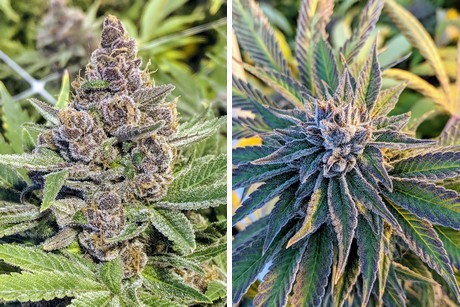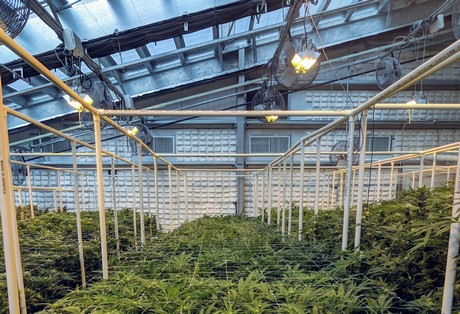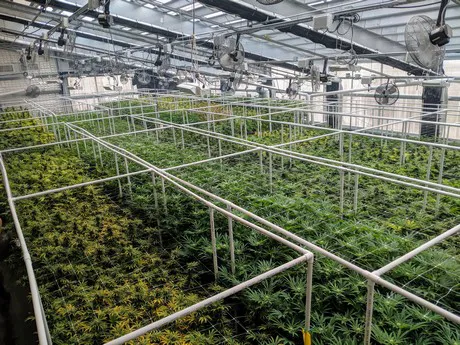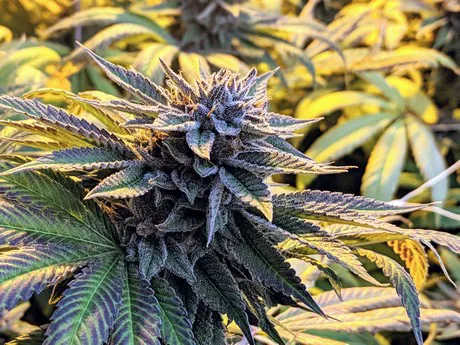As the cannabis industry stepped out of prohibition times, a whole new set of technology and solutions became available to cannabis growers. But that was not the only change. An increasing number of countries have been approving laws to regulate the production of cannabis for medical purposes. Therefore, the cannabis industry inevitably merged with the pharmaceutical industry, giving birth to a very interesting and profitable hybrid. However, in order to partake in this industry, growers are asked to follow strict rules, as they are dealing with medicines that must give patients the same effect every time.
Thus, the competition within the market started to become fierce, with many growers venturing into ‘uncharted territories’, struggling to keep up with the pace of the industry as a whole. The reasons are many, one above all is the lack of knowledge with regards to large-scale operations. This is the precious lesson that Joe Rothberger, cultivation leader with RootsRX, learned in his almost ten years within this industry. “I have been in the cannabis industry for almost ten years here in Colorado. What was available for technology changed a bunch,” he pointed out.
“There are so many technologies available and, at the same time, the market is incredibly competitive,” Joe explains. “Consumers demand the products be clean and safe to consume. Ten years ago, we didn’t have the legislation we have now, that is demanding chemical testing for pesticides, for instance. All of this has come about over the course of 10 years. As the industry evolves, we have to stay current with those practices, or consumers will stop buying our product.”
Countering the oversupply
According to recent market developments, a few places in the United States and in Canada are currently experiencing a cannabis oversupply. Joe takes care to point out that, before news about it broke out, he already anticipated that by looking at how things were moving in United States. “Colorado is the oldest established cannabis market in the United States. However, as more states legalize cannabis, growers’ revenue in this area is going down, which tells me that there is more product than demand,” he says. “Now, in the State of Colorado there are almost 1,000 growers – almost twice as many as ten years ago, when I started. The competition in the market is lowering the price per pound, but at the same time it really demands the producer to be at the top of their game in order to sell the product.”

One of the reasons of the cannabis oversupply in Canada has to be found in the regulatory environment which allows growers to export their product, thus pushing them to produce as much as they can. However, this is not the case in Colorado, where Joe is based. “Here, medical businesses are required to stick to a plant count. Patients give businesses the plant count. Recreationally, you have a plant count but it is much larger.”
However, Joe believes that there is a way to stand out in such a highly competitive market. “I have seen a handful of cultivation sites that are putting out product that is of high quality, and consumers will demand that product,” he points out. “We have something called the race to the bottom, which is the cheapest price available. It is not cost effective for growers if the consumer is asking for low price. If you produce a clean product, the market will seek it out. Customers will walk away from a product that is not produced well, on top of the fact that badly produced product hardly would comply with pharmaceutical standards.”
Growing up in the mountains
The weather in Colorado can be quite unpredictable, and Joe jokingly remarks: “We have a lot of sunlight here, but at the same time we experience a lot of snowfall during the year. I am actually looking at a pile of snow right now!” The reason for this is also because Joe built his greenhouse on the side of a mountain. “We are based in the town of Leadville, Colorado, which is at 10,200ft of altitude. It is a small rural town, but we are proud to be members of this community. Plus, we are surrounded by mountains that are 14K feet high.”

According to him, growing at this altitude means his cannabis will be of a very high quality. “Growing at this elevation, and the fact that we are using a greenhouse, is allowing us to have an incredibly high terpenes profile. There is something about harnessing the sun and being up at this altitude which enables the plant to express its full potential. We are cultivating a dozen different cultivars that are very unique because of that.”
Obviously, growing such a greenhouse was not an easy endeavor. “The first greenhouse was built five years ago under Ceres Greenhouse Solutions guidance,” he says. “This is a structure that is built with a curtain on it so that we can carry out light deprivation operations. 3K square feet are for blooming, and this too was designed by Ceres Greenhouse Solutions. Propagation and veg occur in another building, right next to it. We are currently trying to understand how to control climate more efficiently, and this is where Ceres’s team came into play.”
Controlling a harsh climate
He continues: “We use a highly efficient, highly insulated hybrid greenhouse. The greenhouse has 3 of the 4 walls insulated with an R-value of 32. The solid north wall and end walls not only help to hold heat in and keep the cold out, they also help to reflect light in the greenhouse. In the winter, we have 80% to 100% more light in the greenhouse than you would have outside, as we reflect a lot of the light back into your greenhouse that would otherwise escape.”

Since the weather in the area where Joe is active is extremely harsh, the design of the greenhouse had to be done with great attention to the smallest of the details, as climate control can incredibly affect a grower’s revenue. “The temperature swings are very dramatic. The environmental control within the greenhouse in order to balance that out was very well designed. It was a big factor when Ceres built the greenhouse, that is, how do we keep this efficient.”
Nights can be very cold, and during the day temperatures could rise unexpectedly as the sun is very intense. “Our facility has a GHAT system designed by Ceres Greenhouse Solutions. That is, it uses thermal energy to circulate air through the base of the cement pad of the building. That helps us with the ups and downs of the weather changes.”

However, controlling the climate in a greenhouse located in such a harsh environment could become very costly, but mostly it can generate a lot of pollution. That is why Joe built his facility taking into consideration the carbon footprint and finding a way reduce it. “This facility was built with the idea in mind that power consumption is a real concern in producing cannabis. The team with Ceres is very much aware of that, and they helped us a lot with this,” he says. “You must keep an eye on this if you want to make a profit, and one way for doing this is to harness the sun.”
For more information:
Ceres Greenhouse Solutions
1898 Flatiron Ct, Suite 125
Boulder, CO 80301
info@ceresgs.com
www.ceresgs.com
Roots RX
145 Front St, Leadville
CO, 80461
719-486-0912
rootsrxstores.com
